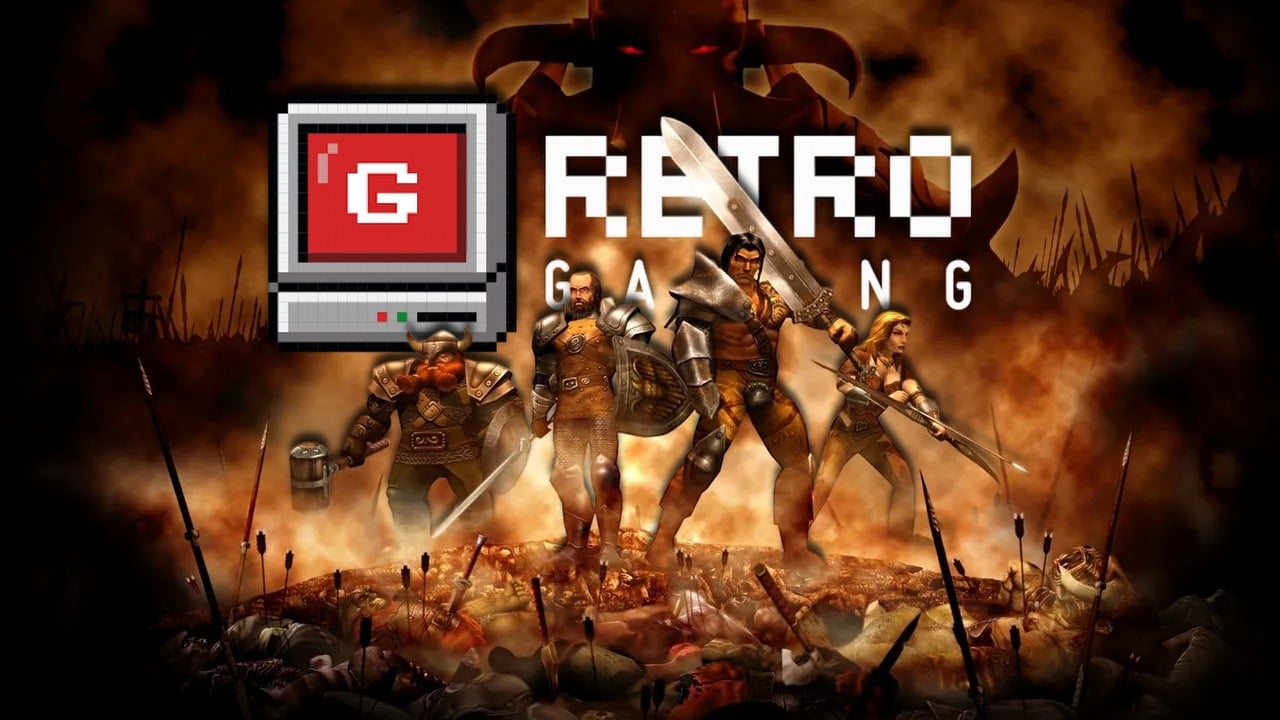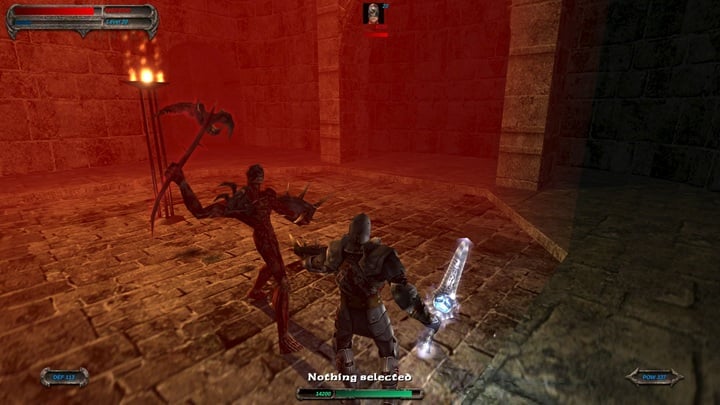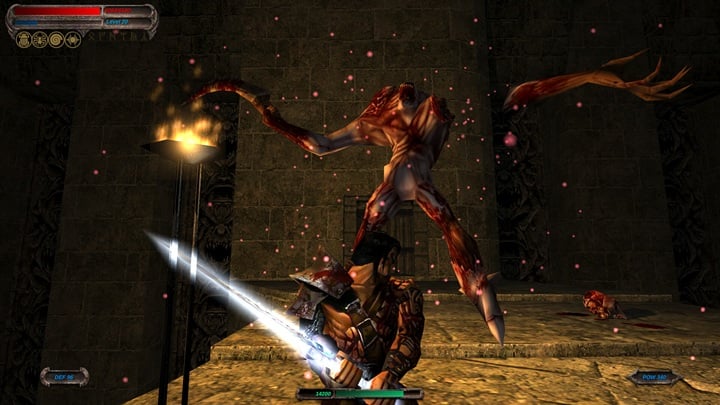
The early 2000s represented a golden era for the slasher genre, even though popular titles from series like Devil May Cry, God of War, and Ninja Gaiden weren’t playable on personal computers during that time. However, PC gamers had little to complain about as they were still provided with numerous games suitable for combat using weapons such as swords and axes (and more).
In more recent times, let’s revisit Severance: Blade of Darkness, an action-packed game that was launched in the year 2001, similar to our adventure with Rune where we embodied a Viking thirsting for revenge.
Four characters, one aim
In the game “Severance: Blade of Darkness“, we were offered four distinct characters to control. Among them, I particularly enjoyed using the knight Sargon, and the barbarian Tukurama was another favorite. There were also two more characters, Amazon Zoe and dwarf Naglfar, eagerly waiting for us to explore their unique traits. Each character came with their own set of abilities, vulnerabilities, combat techniques, and weapon preferences. These aspects weren’t just visual flair; they significantly influenced the gameplay experience within
In my preferred role-playing scenario, my favorite character sported both a sword and a shield, while the barbarian wielded a large two-handed weapon. Zoe opted for polearms, and the dwarf excelled with one-handed axes and shields. What made the knight stand out for me was his versatility; I believed he had the ideal blend of speed, power, and defense capabilities. Conversely, the barbarian seemed unfamiliar with a shield and moved rather slowly, but he packed quite a punch.
As a gamer, I found the character selection process vital. You see, while all characters could theoretically wield any type of weapon, using anything other than their preferred tool significantly slowed down their agility. It made sense to me because, just like real warriors, not everyone is a master of every weapon. Some are better with swords, others with axes, and so on.

Soulslike progenitor? Not really, but…
In the Steam game description, the developers claim that their creation significantly influenced the development of the soulslike genre. While I believe there might be some overstatement in this claim, it’s worth noting that certain elements found in “Severance: Blade of Darkness” can be traced back to what is now considered typical in the Dark Souls series.
The game developed by Rebel Act Studios was quite challenging; you couldn’t simply breeze past it. Instead of recklessly charging at every enemy, it would be more effective to engage opponents cautiously, dodging their attacks and seeking gaps in their defense before launching precise counterattacks. Admittedly, my younger self struggled to grasp this concept initially (but I did eventually get the hang of it).
In the course of our journey, we encountered not just ordinary foes but also formidable adversaries stronger than them. These included orcs, demons, skeletons, and more minor entities such as trolls and golems. Some of these served as bosses for us to confront. Our character could be in grave danger when facing a single enemy, while engaging multiple foes often led to a dramatic end for him.
In wrapping up our discussion about combat, it’s crucial to acknowledge its harshness, particularly when considering that the game permitted us to employ dismembered foes as makeshift weapons. This aspect proved beneficial at times, since our regular weapons were prone to sustaining damage and breaking without warning.

Nonlinear adventure
Severance: Blade of Darkness transports us into a grim fantasy realm teeming with turmoil, where the populace battles fearsome beasts. Consequently, it’s no wonder that Inana, the deity governing this world, chose to designate her champion, who was tasked with quelling the threat rising from the Abyss and reestablishing harmony across the realm.
The journey planned for us took us through various captivating settings such as dimly lit dungeons and desolate landscapes, grand palace or temple insides, and surprisingly, the depths of an active volcano. Occasionally, the game allowed us to decide our next destination, although we all ultimately ended up at the same final destination. However, that element of choice added a delightful twist to the experience.
Occasionally, we encountered breaks from continuous fighting. While the primary emphasis was on battle, we encountered environmental challenges too. These involved interacting with various objects, managing hydraulic systems, and disarming traps.
Or simply:
In addition to the frequent battles, there were occasional environmental puzzles involving object interaction, hydraulics, and trap deactivation.

Character development
In the game “Severance: Blade of Darkness”, there were Role-Playing Game (RPG) aspects as well. As we continued playing, our character grew stronger by gaining experience points and acquiring new abilities. Additionally, we collected superior gear over time.
Over time, I noticed that the game subtly adjusted the difficulty levels to keep me challenged. However, this meant that even when defeating bosses, it didn’t always feel like a grand heroic victory because the enemies seemed to level up alongside me.
What happened next?
The action-adventure game “Severance: Blade of Darkness” was well-liked by both players and critical media. However, the developers behind it didn’t go on to produce any other titles. In 2002, a new video game studio, Mercury Steam, emerged from the remnants of that team. They later achieved global fame with games such as “Castlevania: Lords of Shadow”.
After a long absence, the game known as Blade of Darkness resurfaced once more in November 2022, first on Nintendo Switch. A few months later, in March 2023, it expanded to other platforms. Despite a minor title adjustment, the developers kept the original gameplay intact. They put considerable time and effort into enhancing the graphics, ensuring they work seamlessly with widescreen displays and 4K resolution.

How to play Blade of Darkness today?
The traditional version of “Severance: Blade of Darkness” comes with a small price tag. However, you can also obtain this game digitally. On Steam and GOG.com, it’s priced at $14.99, the same goes for the Microsoft Store and PlayStation Store, while on the Nintendo eShop it costs 14.99 dollars.
Read More
- Who Is Harley Wallace? The Heartbreaking Truth Behind Bring Her Back’s Dedication
- Basketball Zero Boombox & Music ID Codes – Roblox
- 50 Ankle Break & Score Sound ID Codes for Basketball Zero
- 50 Goal Sound ID Codes for Blue Lock Rivals
- LINK PREDICTION. LINK cryptocurrency
- Ultimate AI Limit Beginner’s Guide [Best Stats, Gear, Weapons & More]
- TikToker goes viral with world’s “most expensive” 24k gold Labubu
- 100 Most-Watched TV Series of 2024-25 Across Streaming, Broadcast and Cable: ‘Squid Game’ Leads This Season’s Rankers
- League of Legends MSI 2025: Full schedule, qualified teams & more
- All Songs in Superman’s Soundtrack Listed
2025-06-28 21:02